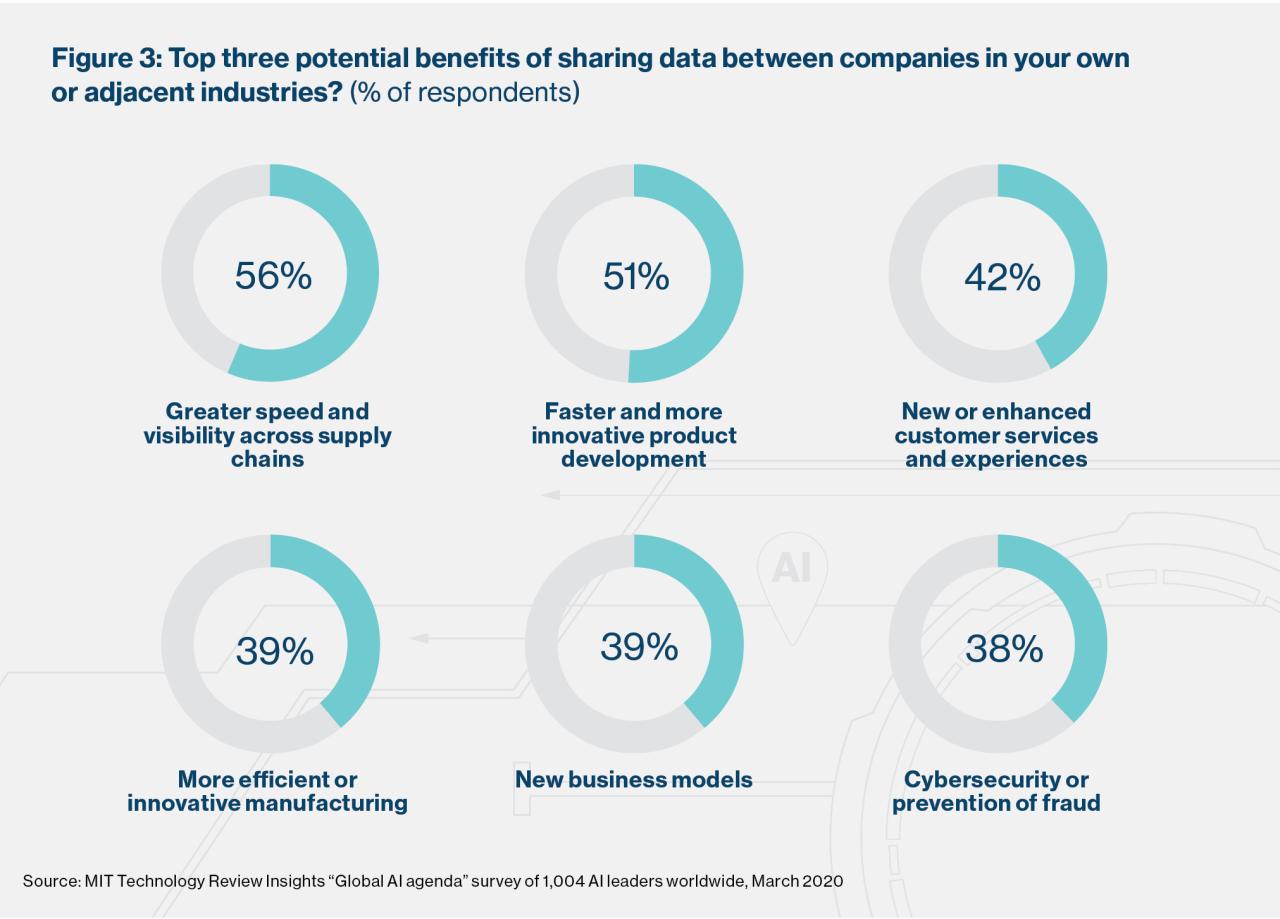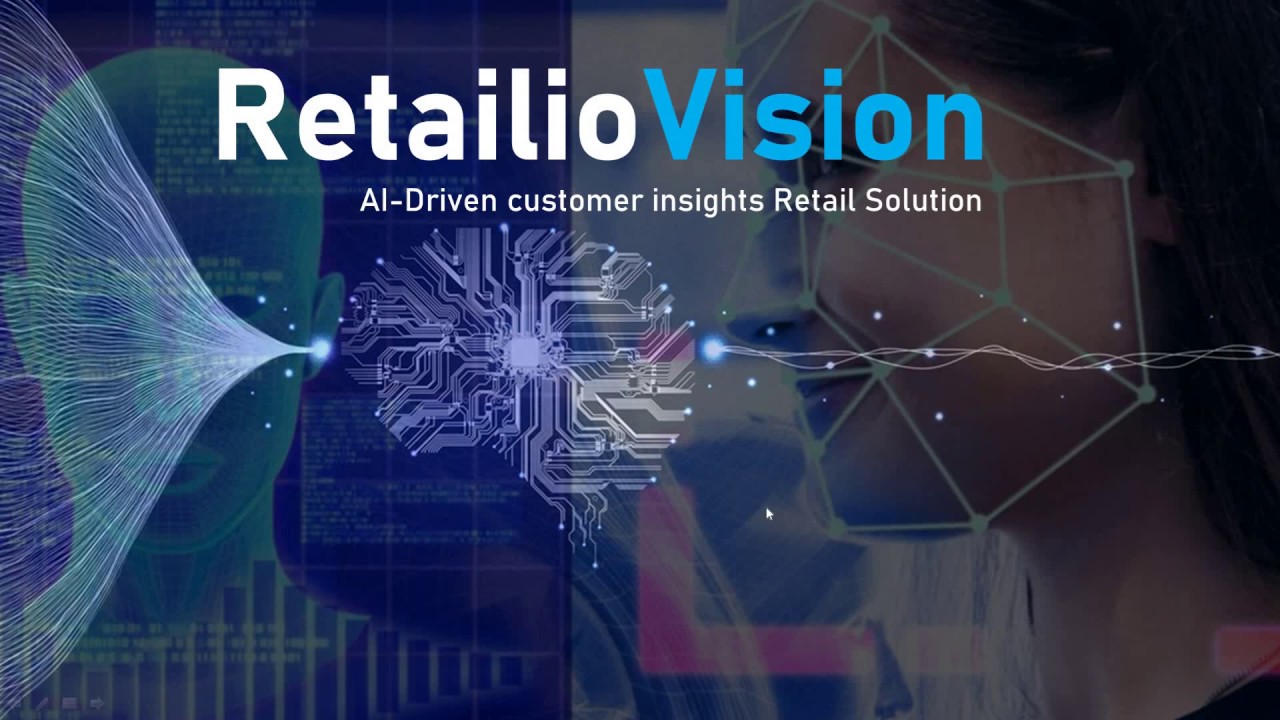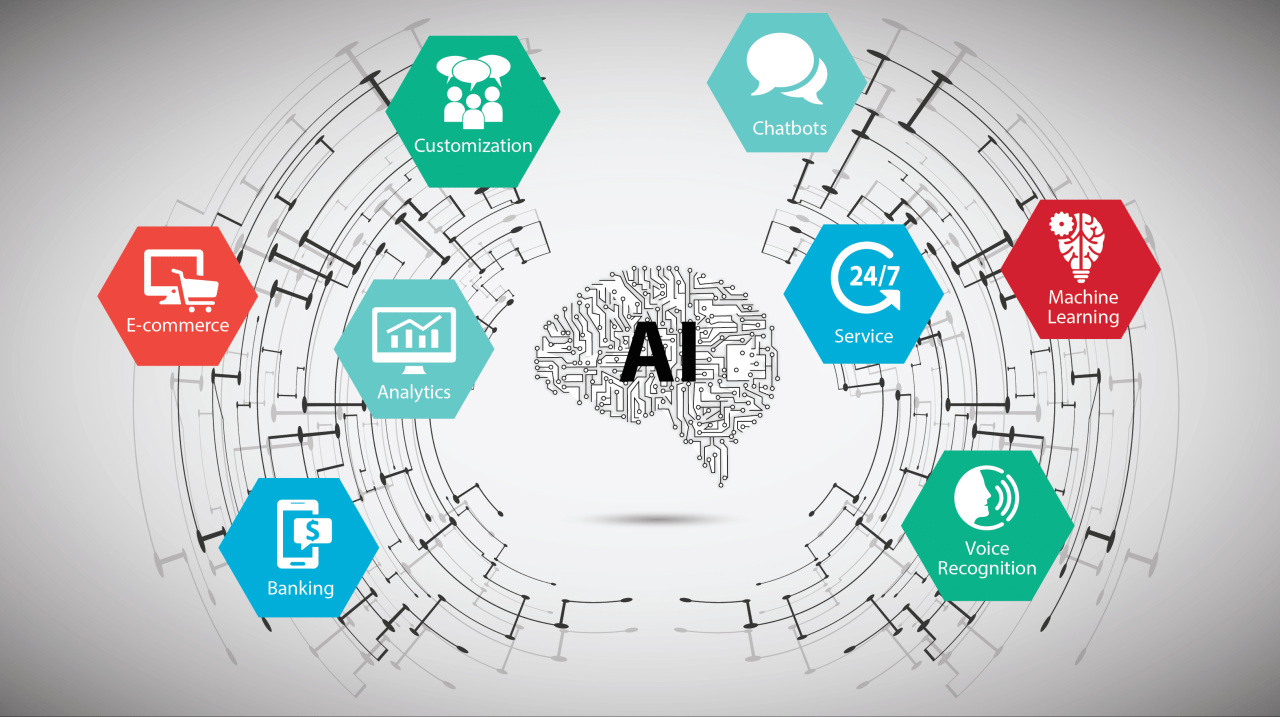AI-driven customer insights are revolutionizing how businesses understand and interact with their clientele. This exploration delves into the core components of AI-powered customer understanding, contrasting it with traditional methods and showcasing real-world examples of successful implementation. We’ll examine various AI techniques, data sources, and ethical considerations, ultimately demonstrating how actionable strategies emerge from these insights.
From data collection and analysis using machine learning and natural language processing to visualizing and communicating findings to stakeholders, we’ll cover the entire process. We’ll also discuss how to measure the return on investment (ROI) of AI-driven customer insights, providing a comprehensive overview of this transformative business approach.
Defining AI-driven Customer Insights

AI-driven customer insights represent a transformative approach to understanding customer behavior, preferences, and needs. By leveraging the power of artificial intelligence, businesses can analyze vast quantities of data to uncover previously hidden patterns and generate actionable insights that drive better decision-making and improved customer experiences. This approach goes beyond traditional methods by offering speed, scale, and predictive capabilities.AI-driven customer insights are built upon three core components: data acquisition, AI algorithms, and insightful interpretation.
Data acquisition involves collecting diverse customer data from various sources, including CRM systems, website analytics, social media, and transactional databases. AI algorithms, such as machine learning and natural language processing, then analyze this data to identify trends, patterns, and anomalies. Finally, insightful interpretation translates the raw data analysis into actionable strategies, providing clear recommendations for businesses to improve their products, services, and customer interactions.
Differences Between Traditional and AI-Powered Customer Insight Gathering
Traditional customer insight gathering often relies on manual processes like surveys, focus groups, and analysis of smaller datasets. This approach is often time-consuming, resource-intensive, and limited in its ability to identify complex patterns or predict future behavior. In contrast, AI-powered customer insight gathering leverages automation and advanced algorithms to process massive datasets rapidly, uncovering hidden correlations and predicting future trends with greater accuracy.
The scale and speed of AI allow businesses to react more quickly to changing customer preferences and market dynamics, leading to a more agile and responsive business strategy. For example, a traditional market research study might take months to complete and yield a limited sample size, while AI can analyze millions of data points in real-time to identify emerging trends within hours.
Examples of Businesses Successfully Using AI for Customer Understanding
Netflix utilizes AI-powered recommendation engines to personalize content suggestions for each user, significantly improving user engagement and satisfaction. Amazon employs AI to analyze customer purchase history and browsing behavior to offer targeted product recommendations and personalize the shopping experience. Many banks use AI-powered fraud detection systems to identify and prevent fraudulent transactions, improving security and customer trust. These examples highlight the diverse applications of AI in improving customer understanding and driving business success.
Comparison of AI Techniques for Customer Insight Generation
The following table compares three different AI techniques commonly used for generating customer insights:
| AI Technique | Description | Advantages | Disadvantages |
|---|---|---|---|
| Machine Learning (ML) | Uses algorithms to identify patterns and make predictions from data without explicit programming. | High accuracy in prediction, automation of insights generation. | Requires large datasets, can be complex to implement and interpret. |
| Natural Language Processing (NLP) | Analyzes text and speech data to understand customer sentiment, opinions, and needs. | Uncovers valuable insights from unstructured data like reviews and social media posts. | Can be challenging to handle nuances in language and slang. |
| Deep Learning (DL) | A subset of ML using artificial neural networks with multiple layers to analyze complex data. | Can identify highly complex patterns and relationships in data. | Requires significant computational power and expertise. |
Data Sources and Collection Methods

Harnessing the power of AI for customer insights necessitates a robust and ethically sound approach to data acquisition. The quality and diversity of data directly impact the accuracy and value of the insights generated. This section explores various data sources, ethical considerations, best practices for data quality, and a sample data collection process.
AI-driven customer insights rely on a multitude of data sources to build a comprehensive understanding of customer behavior and preferences. The more diverse and reliable these sources, the richer and more accurate the insights will be. Ethical considerations are paramount throughout the entire process, from data collection to analysis and application.
Diverse Data Sources for AI-Driven Customer Insights
Five diverse data sources are crucial for developing a holistic view of the customer. These sources, when combined and analyzed effectively, provide a rich tapestry of information that can inform business strategies and improve customer experiences.
- Transaction Data: This includes purchase history, payment methods, and order details. Analysis of this data reveals purchasing patterns, product preferences, and customer lifetime value.
- Website and App Analytics: Data gathered from website interactions, such as page views, time spent on site, and clickstream data, provides insights into user behavior and navigation patterns. Similarly, app analytics offer data on app usage, feature engagement, and in-app purchases.
- Customer Relationship Management (CRM) Data: CRM systems store a wealth of information about customer interactions, including contact details, communication history, and support tickets. This data provides context for understanding customer relationships and identifying potential issues.
- Social Media Data: Monitoring social media platforms for brand mentions, customer reviews, and sentiment analysis offers valuable insights into public perception and customer feedback. This data helps identify areas for improvement and track brand reputation.
- Survey and Feedback Data: Directly soliciting customer feedback through surveys, polls, and feedback forms provides valuable qualitative data that complements quantitative data from other sources. This data helps understand customer needs and satisfaction levels.
Ethical Considerations in Data Collection and Usage
The ethical implications of collecting and using customer data are significant and must be addressed proactively. Transparency, consent, and data security are paramount to maintaining trust and complying with regulations.
Data collection must be transparent, informing customers about what data is being collected, how it will be used, and with whom it will be shared. Obtaining explicit consent before collecting and using personal data is essential. Robust security measures are needed to protect customer data from unauthorized access and breaches. Furthermore, adhering to relevant data privacy regulations, such as GDPR and CCPA, is crucial.
Best Practices for Ensuring Data Quality and Accuracy
Maintaining high data quality is critical for generating reliable and actionable insights. Several best practices ensure data accuracy and completeness.
- Data Cleaning and Validation: Implementing data cleaning processes to identify and correct inconsistencies, errors, and missing values is essential. Data validation techniques help ensure data integrity and accuracy.
- Data Governance Policies: Establishing clear data governance policies and procedures ensures data quality is consistently maintained throughout the data lifecycle. This includes defining data ownership, access controls, and data quality standards.
- Regular Data Audits: Conducting regular data audits helps identify potential data quality issues and ensures compliance with data governance policies. These audits should involve thorough data checks and validation.
- Data Integration and Standardization: Integrating data from various sources requires careful planning and execution. Data standardization ensures consistency and comparability across different datasets.
Data Collection Process Flowchart for an E-commerce Business
The following flowchart illustrates a simplified data collection process for a hypothetical e-commerce business. Each stage is crucial for ensuring the quality and ethical use of collected data.
The flowchart would depict a process starting with a customer visiting the website. This would lead to the collection of website analytics data (page views, time on site etc.). Next, a purchase would trigger the collection of transaction data (purchase details, payment information). Post-purchase, the customer might receive a survey or feedback request, leading to the collection of survey data.
Finally, all this data is consolidated into a central database for analysis. Throughout this process, ethical considerations such as obtaining consent and ensuring data security are highlighted at each step.
AI Techniques for Customer Insight Extraction
AI significantly enhances the extraction of valuable customer insights from diverse data sources. By leveraging sophisticated algorithms and analytical techniques, businesses can gain a deeper understanding of customer preferences, behaviors, and needs, leading to improved decision-making and enhanced customer experiences. This section explores several key AI techniques employed in this process.
Machine Learning Algorithms in Customer Segmentation, AI-driven customer insights
Machine learning algorithms play a crucial role in customer segmentation, allowing businesses to group customers with similar characteristics and behaviors. This enables targeted marketing campaigns, personalized product recommendations, and improved customer service strategies. For example, k-means clustering can group customers based on purchasing history, demographics, and website activity. Similarly, hierarchical clustering can create a hierarchy of customer segments, revealing relationships between different groups.
These algorithms analyze vast datasets to identify patterns and relationships that would be impossible to discern manually, leading to more effective and efficient customer segmentation. The result is a more nuanced understanding of customer preferences and needs, leading to more effective targeting and personalization efforts.
Natural Language Processing (NLP) and Sentiment Analysis for Understanding Customer Feedback
NLP and sentiment analysis are complementary techniques used to extract valuable insights from unstructured text data, such as customer reviews, social media posts, and survey responses. NLP focuses on processing and understanding the structure and meaning of human language, allowing for the extraction of key themes, topics, and entities from customer feedback. Sentiment analysis, on the other hand, goes further by identifying the emotional tone expressed in the text, determining whether the sentiment is positive, negative, or neutral.
For example, NLP can identify recurring complaints about a specific product feature, while sentiment analysis can gauge the overall customer satisfaction with that feature. Combining these techniques provides a comprehensive understanding of customer opinions and helps businesses identify areas for improvement. A company might use NLP to identify common s in negative reviews, and sentiment analysis to quantify the overall negativity, informing product development and customer service strategies.
Predictive Modeling for Forecasting Customer Behavior
Predictive modeling utilizes historical data and machine learning algorithms to forecast future customer behavior. This includes predicting customer churn, lifetime value, and future purchases. For example, a telecommunications company might use predictive modeling to identify customers at high risk of churning based on factors such as usage patterns, billing history, and customer service interactions. This allows the company to proactively intervene with retention offers and prevent customer loss.
Similarly, e-commerce businesses can use predictive modeling to personalize product recommendations and anticipate future demand, optimizing inventory management and marketing campaigns. These models rely on various algorithms, including regression analysis, decision trees, and neural networks, to identify patterns and predict future outcomes. A successful prediction model for customer churn might consider factors like contract length, customer service interactions, and recent billing issues, allowing for targeted retention strategies.
Common AI Tools and Platforms for Customer Insight Analysis
Several AI tools and platforms facilitate customer insight analysis. These platforms offer a range of capabilities, from data collection and preprocessing to advanced analytical techniques and visualization tools. The choice of platform depends on the specific needs and resources of the business.
- Google Cloud Platform (GCP): Offers a comprehensive suite of AI and machine learning services, including natural language processing, machine learning APIs, and big data analytics tools.
- Amazon Web Services (AWS): Provides similar services to GCP, with a strong focus on scalability and cost-effectiveness.
- Microsoft Azure: Offers a robust platform for AI and machine learning, with a wide range of tools and services tailored for different business needs.
- Salesforce Einstein: An AI-powered CRM platform that provides intelligent insights and automation capabilities for sales and customer service teams.
- Tableau and Power BI: Business intelligence tools that offer robust data visualization capabilities, allowing for the effective communication of customer insights.
Visualizing and Communicating Insights
Effectively communicating AI-driven customer insights requires translating complex data into easily understandable visuals and narratives. This process ensures that stakeholders, regardless of their technical expertise, can grasp the key findings and their implications for business strategy. Clear visualization and compelling storytelling are crucial for driving action and achieving positive business outcomes.
Data Visualization Examples
Several visualization methods can effectively communicate customer insights. For instance, a bar chart could illustrate the distribution of customer satisfaction scores across different product categories. The x-axis would represent the product categories (e.g., Software, Hardware, Services), and the y-axis would represent the average satisfaction score (on a scale of 1 to 5). A higher bar would indicate greater customer satisfaction within that specific product category.
Alternatively, a pie chart could show the proportion of customers belonging to various demographic segments (e.g., age groups, income levels). Each slice of the pie would represent a segment, with its size proportional to the segment’s representation within the customer base. A line graph could track customer churn rate over time, highlighting trends and potential areas for intervention. The x-axis would represent time (e.g., months), and the y-axis would represent the churn rate (percentage of customers who cancelled their subscription).
Communicating Complex Insights to Non-Technical Stakeholders
Communicating complex insights to non-technical stakeholders necessitates simplifying technical jargon and focusing on the implications of the findings. Avoid using technical terms unless absolutely necessary, and when used, provide clear definitions. Instead of focusing on the underlying algorithms or statistical models, emphasize the practical implications of the insights for business decisions. For example, instead of saying “the k-means clustering algorithm identified three distinct customer segments,” you could say “our analysis revealed three groups of customers with different needs and preferences.” Using analogies and real-world examples can also make the information more relatable and understandable.
Finally, prioritize clear and concise language, focusing on the key takeaways and avoiding unnecessary detail.
Data Storytelling Techniques
Effective data storytelling involves weaving a narrative around the data to make it more engaging and memorable. Start with a compelling hook that grabs the audience’s attention, and then present the key findings in a logical and sequential manner. Use visuals to illustrate your points and support your narrative. For example, you could start by highlighting a significant problem or challenge, then present the data insights that shed light on the issue, and finally, propose solutions based on those insights.
The story should have a clear beginning, middle, and end, with a memorable takeaway message. A strong narrative can help the audience connect with the data on an emotional level, making it more likely that they will remember and act upon the insights.
Presentation Slide Summarizing Key Findings
A presentation slide summarizing key findings might include a title such as “Understanding Our Customers: Key Insights and Recommendations.” The slide could then feature a concise overview of the study’s objectives, followed by three to four key findings presented using bullet points and visually supported by small, clear charts (perhaps miniature versions of those previously described). For example, one bullet point might read: “Customer satisfaction is highest among users of our premium service (see chart).” The chart would be a small bar chart comparing satisfaction across service tiers.
Another bullet point could be: “The majority of our customers are aged 25-44 (see chart),” with a small pie chart illustrating the age distribution. The slide would conclude with two or three actionable recommendations derived directly from the findings, for example: “Increase marketing efforts targeting the 25-44 age demographic,” and “Invest in improving the user experience of our standard service.” The overall tone should be confident and action-oriented, emphasizing the value of the insights for strategic decision-making.
Actionable Strategies Based on Insights: AI-driven Customer Insights

AI-driven customer insights offer businesses a powerful tool for strategic decision-making, moving beyond simple data analysis to proactive, impactful actions. By leveraging these insights, companies can significantly improve customer retention, personalize marketing efforts, and optimize customer service operations. This section will explore three key business strategies that directly benefit from AI-powered customer understanding.
Reducing Customer Churn Through AI-Powered Predictions
Predictive analytics, a core component of AI, allows businesses to identify customers at high risk of churning. By analyzing historical data such as purchase frequency, customer service interactions, and website activity, AI algorithms can pinpoint patterns and behaviors indicative of impending churn. For example, a significant decrease in engagement with a company’s app or website, combined with negative feedback in recent customer surveys, might trigger an alert flagging a customer as at risk.
This early warning system enables proactive intervention. Businesses can then implement targeted retention strategies, such as offering personalized discounts, loyalty programs, or improved customer support. Netflix, for instance, uses AI to analyze viewing habits and recommend relevant content, keeping users engaged and less likely to cancel their subscriptions. This proactive approach is significantly more cost-effective than reactively addressing churn after it occurs.
Designing Personalized Marketing Campaigns Using AI-Generated Customer Profiles
AI facilitates the creation of highly granular customer profiles, far surpassing the capabilities of traditional segmentation methods. By analyzing vast datasets encompassing demographics, purchase history, online behavior, and social media activity, AI algorithms build comprehensive profiles reflecting individual customer preferences and needs. This detailed understanding allows for hyper-personalized marketing campaigns. For example, an e-commerce company might use AI to identify customers interested in sustainable products and target them with advertisements for eco-friendly items.
Conversely, customers showing a preference for luxury goods might receive promotions for high-end brands. This level of personalization enhances customer engagement, increases conversion rates, and fosters stronger customer relationships. The effectiveness of such targeted campaigns is measurable through improved click-through rates, conversion rates, and ultimately, increased revenue.
Improving Customer Service Using AI-Powered Chatbots and Sentiment Analysis
AI-powered chatbots offer instant, 24/7 customer support, addressing common queries and freeing up human agents to handle more complex issues. Furthermore, sentiment analysis, another AI technique, allows businesses to gauge customer satisfaction in real-time. By analyzing customer feedback from various sources, including chatbot interactions, social media posts, and surveys, AI can identify areas needing improvement. For instance, a surge in negative sentiment related to a specific product might indicate the need for a product recall or software update.
Similarly, a consistently low satisfaction score with a particular aspect of customer service might highlight the need for additional training or process optimization. This continuous feedback loop enables businesses to refine their customer service strategies and enhance the overall customer experience. Many airlines use AI-powered chatbots to answer frequently asked questions about flight schedules and baggage, providing instant responses and reducing the workload on human customer service representatives.
Measuring the ROI of AI-driven Insights
Accurately measuring the return on investment (ROI) of AI-driven customer insight initiatives is crucial for demonstrating their value and securing continued investment. While not always straightforward, a robust approach focusing on quantifiable metrics can effectively showcase the impact of these projects. This involves carefully selecting relevant KPIs, tracking performance diligently, and attributing improvements directly to the AI initiatives.
Metrics for Evaluating AI-Driven Customer Insight Effectiveness
Several key performance indicators (KPIs) can be used to evaluate the effectiveness of AI-driven customer insight projects. These metrics provide a quantifiable measure of success and allow for a comprehensive assessment of the return on investment. The choice of metrics will depend on the specific goals of the project.
- Improved Customer Satisfaction (CSAT): Measured through surveys and feedback mechanisms, this metric reflects the direct impact of insights on customer experience.
- Increased Customer Lifetime Value (CLTV): This metric tracks the total revenue generated by a customer over their relationship with the company. AI insights can lead to better customer retention and increased spending, thereby boosting CLTV.
- Reduced Customer Churn: AI can identify at-risk customers, allowing for proactive interventions to reduce churn rates. This translates to significant cost savings and revenue retention.
- Enhanced Marketing ROI: AI-driven personalization and targeting can significantly improve marketing campaign effectiveness, leading to higher conversion rates and a better return on marketing spend.
- Improved Operational Efficiency: AI can automate tasks, streamline processes, and provide insights to optimize operational workflows, resulting in cost savings and increased productivity.
Calculating ROI for AI-Powered Projects
Calculating the ROI for AI-powered projects requires a careful consideration of both costs and benefits. Costs include the initial investment in AI tools and infrastructure, data acquisition and preparation, and the ongoing maintenance and support. Benefits include the improvements in the metrics discussed above, which can be translated into monetary values.
A simple ROI calculation is: (Net Benefits – Total Costs) / Total Costs – 100%
For example, consider a project where AI-driven insights led to a 10% reduction in customer churn, saving the company $1 million annually, and a 5% increase in conversion rates, generating an additional $500,000 in revenue. If the total cost of the project was $200,000, the ROI would be: (($1,500,000)
- $200,000) / $200,000
- 100% = 650%.
Challenges in Accurately Measuring Impact
Accurately measuring the impact of AI-driven insights can be challenging due to several factors. Attributing specific improvements solely to the AI initiative can be difficult, as other factors may also contribute to overall performance changes. Data quality and availability can also impact the accuracy of measurements. Furthermore, the long-term impact of AI insights may not be immediately apparent, requiring a longer-term perspective for a complete assessment.
Hypothetical Case Study: AI-Driven Customer Segmentation
A hypothetical e-commerce company implemented an AI-driven customer segmentation project. By analyzing purchasing history, browsing behavior, and demographic data, the AI system identified three distinct customer segments: budget-conscious shoppers, value-seekers, and premium buyers. Targeted marketing campaigns were then tailored to each segment, resulting in a 15% increase in conversion rates for the value-seeker segment and a 10% increase in average order value for the premium buyers segment.
The project cost $50,000, while the increased revenue generated was $250,000. The ROI was therefore (($250,000)
- $50,000) / $50,000
- 100% = 400%.
Ultimately, harnessing AI-driven customer insights empowers businesses to make data-informed decisions, fostering stronger customer relationships and driving significant business growth. By understanding customer preferences, predicting behavior, and personalizing interactions, companies can achieve a competitive advantage and unlock previously untapped potential. The journey towards data-driven decision-making is not without its challenges, but the rewards of improved customer satisfaction and increased profitability make it a worthwhile endeavor.
Questions and Answers
What are the limitations of AI-driven customer insights?
AI models are only as good as the data they are trained on. Biased or incomplete data can lead to inaccurate insights. Additionally, interpreting complex AI outputs requires expertise, and the cost of implementing and maintaining AI systems can be substantial.
How can I ensure data privacy when using AI for customer insights?
Adherence to data privacy regulations (like GDPR and CCPA) is crucial. Employing anonymization techniques, obtaining explicit consent, and implementing robust data security measures are essential steps.
What if my business lacks the technical expertise to implement AI?
Many vendors offer AI-powered customer insight solutions as a service. Outsourcing or partnering with a specialized firm can provide access to the necessary technology and expertise without significant internal investment.
